How can we create thriving communities and places that people enjoy and want to live in? Ben Flatman spoke to four key industry figures to find out
When it comes to building the sustainable and desirable new communities that people actually want to live in, it often feels as if Britain is stuck in an intractable mess of its own making. Design quality remains generally low and there is still too little thought given to amenities and infrastructure, leaving people dependent on their cars to access essential services or just buy a pint of milk.
It can be tempting to give up in despair, but if best practice can be identified from across the UK and overseas then we can change the narrative. Achieving that change requires facing up to the systemic challenges and driving a cultural shift in how we deliver new development.
This is a time of massive flux and uncertainty for the UK’s built environment. With a housing crisis that shows no sign of being resolved any time soon, a struggling retail sector and a climate crisis, traditional ideas of what makes a successful community are being re-examined.
There is a widespread consensus that the country needs to raise its game in terms of delivering more and better housing. But how best to achieve this objective? The government had made levelling up a central plank of its agenda, but covid and the cost-of-living crisis have only exacerbated the economic divide.
Can the built environment help level up the poorest parts of the country? Attractive towns and cities help instil pride and draw in investment. But who decides what is beautiful and how do we get developers, architects and planners to pull together to deliver the type of built environment that people want?
For decades the UK has been struggling to find the mix of skills, incentives and regulatory framework to help ensure that new developments are high-quality and sustainable. But the quality of the new places we build is still often poor.
How do we help existing communities thrive, and ensure when we build new places to live that they are conducive to people living healthy and fulfilling lives?
One influential view is that architects simply lack the training to design and create successful communities. The theory goes that architecture schools teach students to conceive of buildings as objects in space, rather than as interconnected elements within an urban tapestry that have a vital public realm and social dimension.
Planners are perhaps also ill-equipped. Their role has been reduced to that of a development control function, with limited levers available to direct development or ensure quality. Education is clearly an important part of the puzzle and Jo Wright of Perkins & Will talks about this in more depth below.
One consequence of so much poor urban design is local resistance to new development in many parts of the country. This in itself holds up the creation of new communities and adds to the cost of development due to lengthy planning processes that often include appeals.
How do we help existing communities thrive, and ensure when we build new places to live that they are conducive to people living healthy and fulfilling lives? These are perennial questions for built environment professionals and society at large. And yet, as a country, we sometimes seem to struggle to agree on the basic principles that underpin the creation of strong and beautiful communities.
Over the last few months, Building Design has been speaking to leaders in urban design, planning and regeneration to understand what influences them and also what works and what does not. These conversations led to us producing a podcast series at the end of last year. Here are some snippets from those episodes, which you can listen to on our website and on podcast platforms. Together they begin to build a picture of the types of initiatives that could help set a new benchmark for how we approach urban design, as well as the creation of new and reinvigorated communities.
Jo Wright explains the importance of education to good urbanism and how she designs for the long term
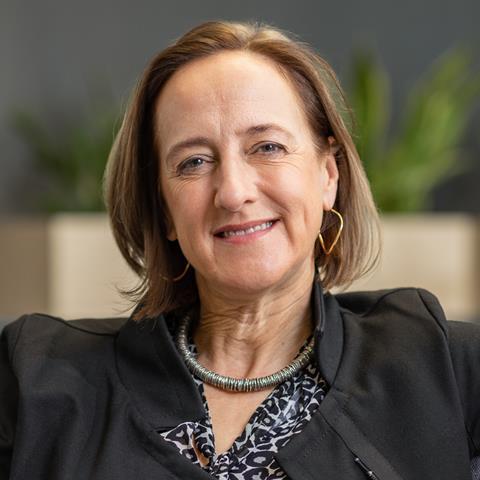
Jo Wright is managing director at Perkins & Will. She has been involved in innovative projects including the National Trust’s HQ in Swindon, designed while she was at Feilden Clegg Bradley Studios, as well as the most recent revisions to the Battersea Power Station masterplan.
She told Building why she thinks creating high-quality places is so important: “I think, as architects and urban designers, we have a huge privilege and responsibility to make decisions that, hopefully, will endure for decades or longer. There’s a longevity in good design which is also fundamental to sustainability.”
Her architectural education at Bath informed an approach to urbanism whereby she always sees individual buildings within a broader fabric – reinforcing the importance of an approach that embraces the wider issues of city design. “It’s relevant that the master’s course at Bath was themed around placemaking, around masterplanning, around bringing groups of students together to work on a place, to create a vision of what that place might become and then to design buildings within that place.”
The course at Bath saw her learning alongside structural and environmental engineers in a collaborative studio environment that she says was modelled on the Arup structure. It was to have a lasting impact, as she went on to work with Peter Clegg on some of the earliest and most innovative sustainable design schemes in the UK, including the National Trust headquarters.
Wright moved to Perkins & Will from Arup, where she had played a key role in integrating architects into the fabric of the parent business, which had always been primarily engineering-focused. Working at Perkins & Will provided an opportunity to once again solve issues around getting multidisciplinary teams to work together within a bigger business – in this case, Dar Group.
“We need goals that are attainable, but the targets should be tough. The built environment is not doing its bit. We are not doing well enough – other sectors are doing better. We need to find ways of incentivising progression towards a more circular economy”
That commitment to working across disciplines also informed Wright’s approach to urbanism, reinforcing her belief that urban design is a collaborative discipline which requires patient delivery by complex teams, often over decades.
Currently Perkins & Will is delivering a major council estate refurb project for the Lancaster West Estate in North Kensington. Managed by principal Rafael Marks, the scheme is being co-designed with the local community, who have lived with the fallout from the Grenfell Tower tragedy for the past few years.
The importance of working with residents and not imposing a solution from above is central to Perkins & Will’s approach to what is a still highly traumatised community. “It has been a very challenging project,” she says. “We’re dealing with a community that has suffered so much.”
When asked how the industry can improve the quality of urban design and help create healthier communities, Wright focuses on sustainability. “We need to face up to carbon reduction and its place in placemaking,” she says. “How do we make sure that everything we do is driving this Not just with individual buildings but for larger-scale developments. How do we legislate to achieve carbon reduction targets?”
Emphasising the need for action from politicians in Westminster, she sets out her vision for a new carbon reduction culture in the built environment. “It would be great to see the government adopting an approach to whole-life carbon and maybe setting targets on a place basis, which allows you to balance carbon reduction out across different typologies,” she says. “There are opportunities in embodied and operational energy to look at different types of buildings and their carbon footprints. We need to define what an affordable level of carbon is and then incentivise or penalise to drive development towards those targets.”
“And it needs a government fluent in carbon,” she adds. “We need goals that are attainable, but the targets should be tough. The built environment is not doing its bit. We are not doing well enough – other sectors are doing better. We need to find ways of incentivising progression towards a more circular economy.
“Again, it’s too easy to say ‘it’s too difficult; development is very complex’. Creating incentives which drive supply chains to accelerate the change – that’s what we’ve got to do. Otherwise we’re never going to get there.”
You can listen to the podcast episode with Jo Wright by clicking the link below. You can also find the podcasts on the main podcast providers such as Spotify and Apple.
Selina Mason discusses people-focused urbanism and Birmingham’s huge Smithfield scheme
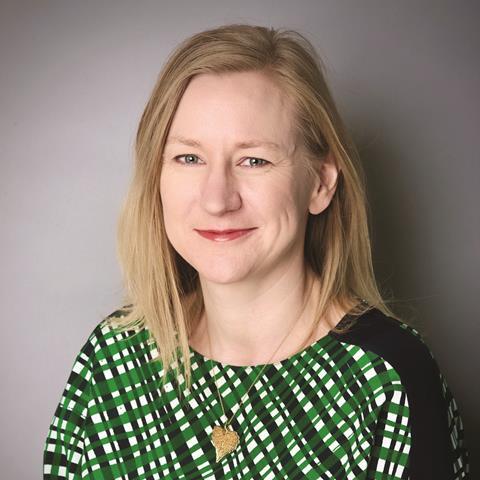
Selina Mason is director of masterplanning and strategic design at Lendlease. She has been at the heart of debates around urban design and how we build better cities for the past two decades. Few people have the wide-ranging experience of public and private sector that Mason draws on to inform her approach to practice.
She studied architecture at Sheffield and Cambridge, before doing a master’s degree in planning at the LSE. She was always drawn to the “bigger picture” side of working in the built environment, and so it was perhaps inevitable that she would be drawn into the world of urban design and masterplanning.
With such a wealth of experience, it is no wonder that Mason is working on such a huge scale for one of the UK’s leading urban developers. The Birmingham Smithfield scheme is seeking to regenerate a huge site in the centre of the city once occupied by a massive wholesale market.
Lendlease prides itself on creating high-quality developments that seek to utilise good design in the pursuit of financial returns. Mason does not shy away from the commercial side of her role at the company – indeed, she sees commercial viability as essential to delivering good-quality, sustainable development.
While currently overseeing the development of the Smithfield masterplan, she was previously director of architecture and design review at CABE, and was closely involved in the design of both the 2012 Olympics themselves and the delivery of the Games’ legacy.
The seven years that Mason spent at CABE were hugely formative: “Every minute of learning there was just brilliant,” she says of her time at the built environment commission. This was followed by another seven years working on the build-up and follow-through from the Olympics, where she put everything she had learnt at CABE “into practice”.
“So much of what we do in development is top-down, and it really shouldn’t be like that. ‘Placemaking’ is a kind of shorthand that we use in the industry, that isn’t always [well] received outside of industry conversations in the way that we’d expect it to be”
Asked why more schemes are not delivering the type of quality urbanism she would like to see, she attributes some of the blame to “a complete disjuncture between planning and urban design, and highways design and highways delivery… they’re poles apart, both in terms of their design drivers and in terms of what good looks like in those different worlds.”
Mason believes that the built environment agenda has moved on significantly since her time at CABE, and now embraces a much greater emphasis on social value and the reuse of buildings. She has become a huge advocate for an increased focus on people-focused urbanism, and highlights the need for engagement and consultation.
Asked why more schemes are not delivering the type of quality urbanism she would like to see, she attributes some of the blame to “a complete disjuncture between planning and urban design, and highways design and highways delivery… they’re poles apart, both in terms of their design drivers and in terms of what good looks like in those different worlds.”
Mason believes that the built environment agenda has moved on significantly since her time at CABE, and now embraces a much greater emphasis on social value and the reuse of buildings. She has become a huge advocate for an increased focus on people-focused urbanism, and highlights the need for engagement and consultation.
Several interviewees we spoke to questioned the use of the term “placemaking” because it is seen as implying something that is done to communities. It suggests the places where urban designers and developers undertake their work are not already there. Mason says: “So much of what we do in development is top-down, and it really shouldn’t be like that. ‘Placemaking’ is a kind of shorthand that we use in the industry, that isn’t always [well] received outside of industry conversations in the way that we’d expect it to be.
“It’s a ‘this is being done to me, not with me’ type of word. But I think the fundamentals of it are that you’re making a place that feels relevant and useful to the people that live and work there. And that’s something we often lose sight of.
“I don’t think you can go wrong if you stick to Jan Gehl’s statement of ‘first life, then spaces, then buildings’ because that really does bring to the fore the whole purpose of a place, which is to support those who live and work there.”
You can listen to the podcast episode with Selina Mason by clicking the link below. You can also find the podcasts on the main podcast providers such as Spotify and Apple.
David Rudlin on the importance of urban design and why planning needs to rediscover its capacity to create good-quality places
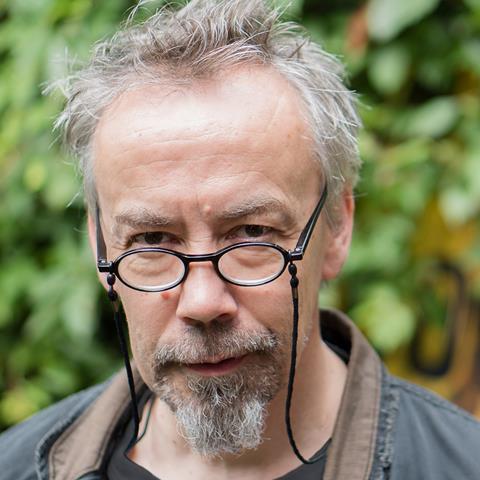
David Rudlin is director of urban design at BDP and one of the UK’s leading urban designers and planning experts. He began his career as a town planner at a time when that role still involved a degree of design responsibility, rather than the increasingly development-management focus it has come to be associated with in recent decades. The idea of the planner as someone who helps provide a clear strategic direction, and sets high standards for placemaking, is one that Rudlin still strongly believes in.
Growing up in Birmingham in the 1970s, he was excited and then increasingly disillusioned with the modernist town planning being implemented around him. “I’ve always said I love modern buildings, but modernist town planning is a disaster,” Rudlin says.
“I also think modernism has a bigger problem in that it doesn’t wear well, whereas traditional places actually get better as they get older – all the incremental change adds to their character. I think modernism looks best on the first days it is opened and then deteriorates thereafter.”
Rudlin’s interest in the built environment and his belief that there was a better way to do urbanism led him to study planning in Manchester, a city with which he has had a close relationship ever since. Like many good architects and urban designers, attachment to a specific location has been critical to his professional outlook. He has been living and working in Manchester throughout its rebirth and emergence as a leading European city and has played a leading role in some of its key developments, including the regeneration of Hulme.
When asked for an example of a place that has got the creating communities and placemaking agenda right, Rudlin points to Manchester, referencing the learning curve the city has been on from the earliest days of its bid to win the Olympics, to its emergence as a thriving hub that is drawing in talent and investment from across the UK and further afield.
“The Thatcher government didn’t have a lot of time for planning. They saw it as an interference with the free market, so planning was very much downgraded as a profession”
“Manchester is a great case study. There’s a story about the process in Manchester which begins when they were bidding for the Olympic Games,” he says. “When the senior people went to Barcelona as part of that process, they realised that Manchester was just awful compared to Barcelona, and that it wasn’t just the cathedrals and concert halls, it was just the basic quality of urban realm in the city.”
The belief that British cities have much to learn from studying successful international case studies has been an important part of Rudlin’s approach, and one of the ideas that led him to spend several years working for Urbed, an innovative urban design and research company that has helped change attitudes to the way that people look at and think about cities in the UK.
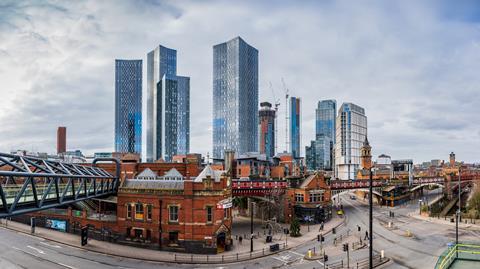
His career spans not only a period of massive change for Manchester but also seismic shifts in planning, housebuilding and placemaking across the UK. Looking back, he observes how “the Thatcher government didn’t have a lot of time for planning. They saw it as an interference with the free market, so planning was very much downgraded as a profession.
“A few years before my time, town planners had been heroes. They’d been the people changing the world and envisaging the future, and building these modernist town centres. And so, in a sense, planners went from heroes to being slightly irrelevant.
“And I don’t think either is justified. I don’t think the hero planner is a useful idea, but neither is the bureaucratic person just pushing planning applications across a desk. We need to find a middle ground, and I think planning has a real role to rediscover.”
More recently Rudlin has led on the creation of the National Model Design Code. He believes the country still has a long way to go to embed good basic standards of urban design, but that design codes could play a crucial role in helping to create high-quality new places and in reinforcing what is good about existing towns and cities.
But he is also deeply aware of the resourcing issues that local authorities face and the need to support the UK’s planning system properly so that it can enable good-quality development and investment.
You can listen to the podcast episode with David Rudlin by clicking the link below. You can also find the podcasts on the main podcast providers such as Spotify and Apple.
Anna Mansfield mourns the loss of shared spaces and emphasizes the importance of designing for women and young people

Anna Mansfield is a director at Publica, a research-based urban design consultancy. She initially thought she wanted to be a fashion designer but found her way into architecture, and from there into urban design and thinking about the city at a much larger scale. She is also a big advocate for urban designers having a broader view of how cities function – she works as a part-time magistrate.
Like many people working in a sector that has community, engagement, and place at its heart, Mansfield observes how much the urban design discussion has moved on in recent years: “The conversations that we have are totally different from the ones we had 13 years ago,” she says. “People’s interest and understanding of how we create and reinvigorate a sense of place has just transformed.”
One key change that has occurred is the emphasis now put on celebrating and reinforcing the existing sense of place in every location where the built environment has an impact. She favors an urban design approach that enables places to speak to themselves, rather than imposing a singular new look and feel.
Significant recent examples of Publica’s work include the subtle redesign of Hanover Square in central London and the nearby Bond Street station Elizabeth Line development, where the practice has contributed to the renaissance of an overlooked historic London square.
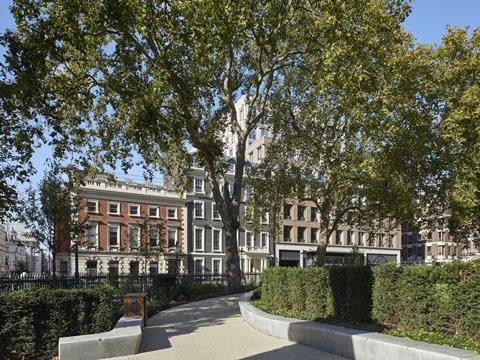
Publica has also played an important part in urban design interventions in other parts of central London, including Marylebone Lane and Bond Street, each time adopting an approach that is low-key but cleverly helps to reinforce the existing sense of place.
One of the things that concerns Mansfield, particularly since covid, is the loss of what she sees as our vital shared spaces, partly due to the disappearance of traditional entertainment and retail spaces. “The thing that worries me most is that we’re suffering a loss of the shared spaces that we have as a society,” Mansfield observes. “Pubs, clubs, live music [venues] – all those other spaces where we meet people who are not the same as us, where we do things – they’re all diminishing rapidly and disappearing.”
Publica places a huge emphasis on taking a deep dive into the specifics of each location and the issues that impact an area or community. “One of the things we’ve always done is put research at the foundation of everything we do,” she says. “And so, in our work, everything stems from our research and informs it.”
“One of the things we found out was that, between 1971 and 2010, the number of children in the UK who are allowed to walk to school by themselves had dropped from 86% to 25%. And that’s only going in one direction”
This approach has led the practice to engage in a wide range of strategic and policy work. Many of these projects prioritize the specific needs of women and young people in the built environment.
“We worked with the GLA on a piece of guidance on making London more child-friendly, just before the pandemic,” she notes. “One of the things we found out was that, between 1971 and 2010, the number of children in the UK who are allowed to walk to school by themselves had dropped from 86% to 25%. And that’s only going in one direction.” Working with the GLA and the mayor’s design advocate Dinah Bornat, Mansfield helped to develop a strategy that “really foregrounds” the importance of young people in the built environment, so that designers and policymakers started to think about how to put the needs of younger people first from the beginning of every project.
“There are four main things you need to think about,” she explains. These are: “to change policy; think about participation from the start; [consider] how you manage spaces; and, of course, designing spaces and thinking about where we put play spaces for children at the beginning of a project.”
Mansfield argues that the social and cultural importance of retail has often been overlooked. She highlights the way in which department stores traditionally doubled as convening spaces, especially for women and young people. Part of Publica’s work is therefore focused on helping to reimagine what the centres of our towns and cities can become, as traditional retail morphs into something different and our urban spaces look for new animating forces to sustain them into the future.


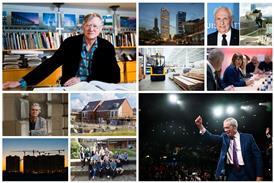
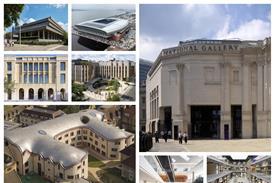

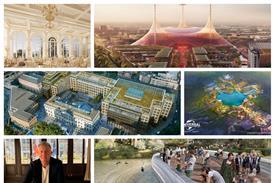










1 Readers' comment